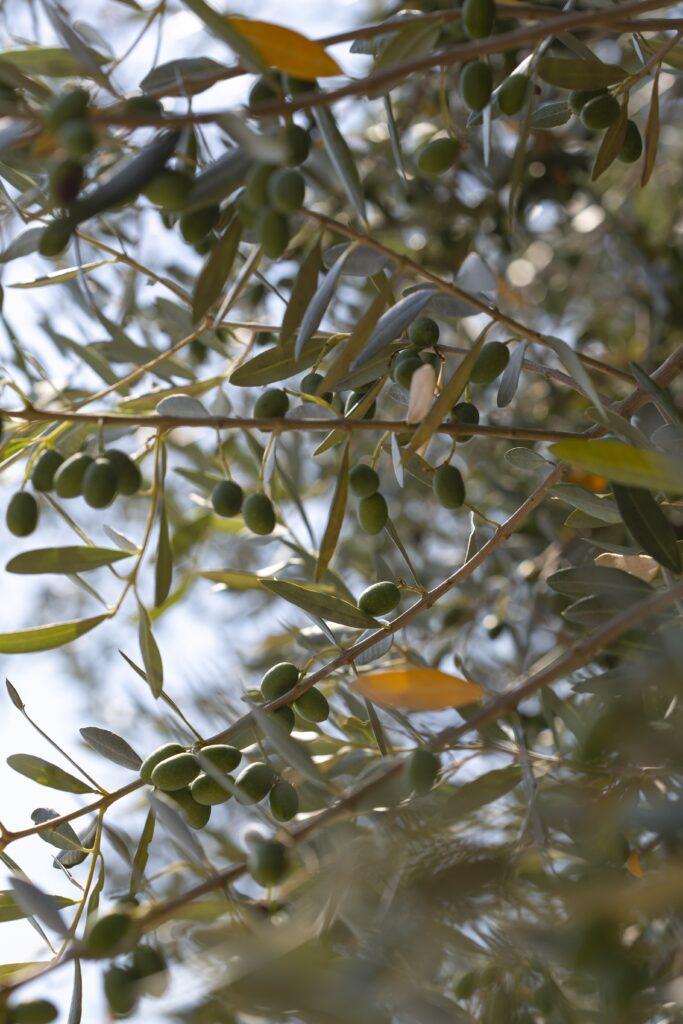
Are you looking to incorporate the Mediterranean diet into your family’s meals but aren’t sure where to start? Cooking for a family with a Mediterranean diet can be a delicious and healthy way to provide nutritious meals for your loved ones. By focusing on fresh ingredients, olive oil, whole grains, and lean proteins, you can create a variety of flavorful dishes that everyone will enjoy. Whether you’re new to the Mediterranean diet or simply want to add more Mediterranean-inspired dishes to your repertoire, this article will provide you with helpful tips and recipe ideas to make cooking for your family both enjoyable and nutritious.

Planning for a Mediterranean Diet
Understanding the Mediterranean Diet
The Mediterranean diet is not just a temporary diet plan but a lifestyle that focuses on fresh, whole foods, and a balanced approach to eating. It is based on the traditional dietary patterns of people from countries such as Greece, Italy, and Spain. This diet emphasizes the consumption of fruits, vegetables, whole grains, legumes, lean proteins, healthy fats, and moderate amounts of red wine. It limits the intake of processed foods, sugary drinks, refined grains, and unhealthy fats. Understanding the principles of the Mediterranean diet is the first step in planning meals that align with this healthy eating style.
Assessing dietary restrictions and preferences
Before creating a meal plan, it is crucial to consider any dietary restrictions or preferences within your family. Some members may have allergies or intolerances to certain ingredients, while others may follow specific dietary preferences such as vegetarian, vegan, or gluten-free. Taking into account these individual needs will help ensure that everyone in your family can enjoy the Mediterranean diet while still meeting their nutritional requirements.
Creating a balanced meal plan
A balanced meal plan is essential to ensure that your family gets all the necessary nutrients while following a Mediterranean diet. Each meal should consist of a variety of food groups, including fruits, vegetables, lean proteins, whole grains, and healthy fats. It is also important to control portion sizes and practice moderation, as the Mediterranean diet relies on balanced eating rather than strict calorie counting. Planning meals in advance, incorporating different Mediterranean ingredients, and experimenting with various cooking techniques will help you create a diverse and enjoyable meal plan for your family.
Exploring Mediterranean Ingredients
Key ingredients in a Mediterranean diet
A Mediterranean diet revolves around a variety of fresh, wholesome ingredients. Some key ingredients commonly used in Mediterranean cooking include olive oil, garlic, onions, tomatoes, herbs, and spices. These ingredients not only add flavor to dishes but also offer numerous health benefits. Additionally, fish and seafood, poultry, legumes, whole grains, and a moderate amount of red wine are staples in the Mediterranean diet.
Incorporating vegetables and fruits
Vegetables and fruits play a significant role in the Mediterranean diet, providing essential vitamins, minerals, and antioxidants. Aim to include a rainbow of colors in your meals by incorporating a variety of vegetables and fruits. Some popular choices in Mediterranean cuisine include tomatoes, bell peppers, zucchini, eggplant, spinach, oranges, lemons, and grapes. You can enjoy them raw in salads, blended into soups, roasted as a side dish, or grilled for a flavorful addition to your meals.
Choosing lean proteins
Lean proteins such as fish, seafood, poultry, and legumes are important protein sources in a Mediterranean diet. These proteins are lower in saturated fat and rich in omega-3 fatty acids, which have been linked to various health benefits. Fish like salmon, tuna, and sardines are especially recommended due to their high omega-3 content. Legumes such as chickpeas, lentils, and black beans are excellent plant-based protein options that can be included in soups, salads, or main dishes.
Incorporating whole grains and legumes
Whole grains are another important component of the Mediterranean diet. They provide fiber, vitamins, and minerals while promoting a feeling of fullness. Options like whole wheat bread, brown rice, quinoa, and oats can be incorporated into meals as side dishes, stuffing, or as the base for salads. Legumes, including beans, lentils, and chickpeas, are not only rich in protein but also provide a good amount of dietary fiber. They can be used in soups, stews, or even as the main ingredient in vegetarian dishes.
Using healthy fats
Healthy fats, such as those found in olive oil, nuts, and seeds, are a vital part of the Mediterranean diet. Olive oil, in particular, is the primary source of fat in this eating pattern and is rich in monounsaturated fatty acids, which have been associated with heart health. It can be used for cooking, dressing salads, or drizzling over roasted vegetables. Additionally, incorporating nuts and seeds like almonds, walnuts, flaxseeds, and chia seeds into your meals can provide a satisfying crunch and added nutritional benefits.
Cooking Techniques for Mediterranean Cuisine
Grilling and roasting
Grilling and roasting are popular cooking techniques in Mediterranean cuisine that enhance the natural flavors of ingredients. Grilling vegetables, fish, or lean meats like chicken or lamb imparts a smoky flavor while keeping them tender and juicy. Roasting vegetables with a drizzle of olive oil and sprinkle of herbs creates caramelized edges, making them even more delicious and appealing.
Sauteing and stir-frying
Sauteing and stir-frying are quick cooking methods that allow you to retain the nutrients and flavors of the ingredients. By using a small amount of olive oil or vegetable broth, you can cook vegetables, meat, or seafood over high heat, preserving their crispness and vibrant colors. These techniques are perfect for creating colorful and nutrient-dense dishes like stir-fried vegetables with garlic and herbs.
Baking and broiling
Baking and broiling are versatile techniques that can be used for a range of Mediterranean dishes. Baking involves cooking food in the oven using dry heat, while broiling uses direct heat from above. Both methods are suited for cooking fish, chicken, or vegetables. Baking is great for casseroles, while broiling can add a nice crispy top to dishes like roasted tomatoes or gratins.
Steaming and poaching
Steaming and poaching are gentle cooking techniques that help retain the natural flavors and nutrients of ingredients. Steaming involves cooking food over boiling water, while poaching requires submerging food in a simmering liquid. Both methods are ideal for delicate ingredients like fish, vegetables, or seafood. Steamed fish with lemon and herbs or poached chicken breast with herbs and vegetables are healthy and flavorful options.
Minimizing deep-frying
While deep-frying is not a traditional cooking method in Mediterranean cuisine, it is worth mentioning for the purpose of avoiding it. The Mediterranean diet prioritizes healthier cooking methods, reducing the intake of excess unhealthy fats. Minimizing deep-frying in favor of alternatives like grilling, baking, or sauteing will help you adhere to the principles of the Mediterranean diet and maintain a healthy lifestyle.
Stocking a Mediterranean Pantry
Essential herbs and spices
Herbs and spices not only add flavor but also contribute to the health benefits of Mediterranean cuisine. Some essential herbs and spices to have in your pantry include basil, oregano, rosemary, thyme, parsley, and cilantro. These herbs can be used to season various dishes, from grilled vegetables to roasted meats. Spices like garlic powder, onion powder, paprika, cumin, and cinnamon add depth and complexity to Mediterranean recipes.
Using olive oil and vinegar
Olive oil is a cornerstone of Mediterranean cooking, providing a rich flavor profile and numerous health benefits. Extra virgin olive oil is recommended, as it is less processed and retains more of its beneficial properties. It can be used for cooking, dressing salads, marinating proteins, or drizzling over finished dishes. Vinegar, particularly red wine vinegar and balsamic vinegar, adds tanginess and acidity to salads, soups, and dressings.
Having a variety of nuts and seeds
Nuts and seeds are versatile ingredients in Mediterranean cuisine, offering a satisfying crunch and a good source of healthy fats. Almonds, walnuts, pistachios, pine nuts, and sunflower seeds are commonly used and can be enjoyed as a snack, sprinkled on salads, or incorporated into dishes like couscous or pilaf. They not only provide texture but also add nutritional value to your meals.
Choosing whole grain flours
When baking or cooking, consider using whole grain flours instead of refined white flour. Whole grain flours, such as whole wheat flour, almond flour, and oat flour, are higher in fiber and nutrients, making them a healthier option. They can be used in various Mediterranean recipes like bread, pizza dough, or even homemade pastries.
Including canned goods and preserved foods
Stocking up on canned goods and preserved foods can come in handy when fresh ingredients are not readily available. Some essential items to have in your pantry include canned tomatoes, canned beans (such as chickpeas and cannellini beans), olives, capers, and anchovies. These items can be used to create flavorful sauces, spreads, or additions to salads and pasta dishes.

Breakfast Ideas for a Mediterranean Diet
Making a Greek yogurt parfait
A Greek yogurt parfait is a delicious and nutritious way to start your day. Layer Greek yogurt with fresh fruits like berries, sliced bananas, or diced peaches. Add a sprinkle of granola or chopped nuts for added crunch. To enhance the flavor, drizzle some honey or a touch of extra virgin olive oil over your parfait.
Preparing an egg-based dish
Eggs are a versatile and protein-rich ingredient that can be incorporated into Mediterranean breakfasts. Whip up a vegetable-filled omelet or make a vegetable frittata using ingredients like spinach, tomatoes, bell peppers, and feta cheese. Serve with whole grain toast or a side of fresh fruit for a balanced meal.
Enjoying whole grain toast with toppings
Whole grain toast provides a hearty base for a Mediterranean-inspired breakfast. Top your toast with avocado slices, smoked salmon, and a squeeze of lemon juice for a refreshing and savory option. Alternatively, spread hummus on your toast and add sliced cucumbers, cherry tomatoes, and a sprinkle of za’atar for a flavorful twist.
Exploring traditional Mediterranean breakfasts
Traditional Mediterranean breakfasts often feature simple but satisfying options. Enjoy a slice of crusty whole grain bread with a drizzle of olive oil and a sprinkle of sea salt. Accompany it with a variety of sliced cheeses, olives, tomatoes, and cucumbers. If you prefer something sweeter, indulge in a bowl of Greek yogurt topped with honey, nuts, and dried fruit.
Lunch and Dinner Options
Creating vibrant salads
Salads are a versatile and refreshing option for both lunch and dinner in a Mediterranean diet. Start with a bed of fresh greens like spinach or romaine lettuce and add a variety of colorful vegetables such as bell peppers, tomatoes, cucumbers, and red onions. For added flavor and texture, include ingredients like feta cheese, olives, grilled chicken or shrimp, and a drizzle of olive oil and vinegar.
Cooking Mediterranean-style soups and stews
Mediterranean-style soups and stews offer a comforting and nutritious option for lunch or dinner. Classic dishes like minestrone, lentil soup, or vegetable stew are packed with vegetables, legumes, and aromatic herbs and spices. You can customize these dishes with your family’s favorite veggies, protein choices, and herbs to make a delicious and hearty meal.
Grilling or roasting fish and seafood
Fish and seafood are a prominent part of the Mediterranean diet due to their rich omega-3 fatty acid content. Grilling or roasting fish like salmon, trout, or sea bass with a sprinkle of herbs and a drizzle of lemon juice is a simple and flavorful way to enjoy them. Serve alongside roasted vegetables or a fresh salad for a well-rounded meal.
Preparing lean meat and poultry dishes
While the Mediterranean diet often leans towards fish and seafood, lean meat and poultry can still be enjoyed in moderation. Opt for lean cuts of meat such as chicken breast or turkey and prepare them using Mediterranean-inspired flavors. Marinate them in herbs, garlic, and lemon juice before grilling or baking. Serve alongside a side of roasted vegetables or whole grain couscous for a satisfying meal.
Making vegetable-based casseroles
Vegetable-based casseroles are a fantastic way to incorporate a variety of Mediterranean ingredients into your meals. Layer sliced eggplant, zucchini, tomatoes, and onions, then top with a mixture of breadcrumbs, herbs, and Parmesan cheese. Bake until golden brown and bubbling for a hearty and flavorful vegetarian main course.
Exploring pasta and grain-based meals
Pasta and grain-based meals can be a part of a Mediterranean diet when enjoyed in moderation and paired with nutritious ingredients. Choose whole grain or legume-based pasta options and top with a variety of vegetables, lean proteins like grilled chicken or shrimp, and a light sauce made with olive oil, garlic, and herbs. Similarly, whole grains like couscous, quinoa, or bulgur can be the base for salads or grain bowls.

Snacks and Appetizers
Whipping up homemade hummus
Hummus is a versatile and healthy dip that can be enjoyed as a snack or appetizer. Make your own by blending cooked chickpeas, tahini, garlic, lemon juice, and olive oil until smooth. Serve with fresh vegetable sticks like carrots, cucumbers, and bell peppers, or whole grain pita bread for a delicious and filling snack.
Making a Greek mezze platter
A Greek mezze platter is a colorful assortment of small dishes that can be enjoyed as an appetizer or snack. Include a variety of ingredients such as olives, feta cheese, stuffed grape leaves, roasted red peppers, and tzatziki sauce. Serve with whole grain bread or pita chips for dipping.
Preparing stuffed grape leaves
Stuffed grape leaves, also known as dolmades, are a traditional Mediterranean appetizer filled with a flavorful mixture of rice, herbs, and spices. These delicious bite-sized treats can be enjoyed on their own or served with a squeeze of lemon or a dollop of Greek yogurt.
Roasting chickpeas for a crunchy snack
Roasted chickpeas are a nutritious and crunchy snack that can be seasoned with various Mediterranean-inspired flavors. Drain and rinse canned chickpeas, then toss them with olive oil, salt, and spices like cumin, paprika, or garlic powder. Roast them in the oven until crispy. Enjoy them on their own or sprinkle them on top of salads for an extra boost of texture and flavor.
Sauces, Dressings, and Dips
Creating a classic Greek tzatziki sauce
Tzatziki sauce is a classic Mediterranean condiment made from Greek yogurt, cucumbers, garlic, lemon juice, and dill. It pairs well with grilled meats, vegetables, or can be used as a dip for pita bread and fresh veggies. Its cool and refreshing flavors make it a versatile addition to many Mediterranean dishes.
Making a versatile vinaigrette
A homemade vinaigrette is an easy way to add flavor to salads or marinate proteins. Combine extra virgin olive oil, vinegar (such as red wine vinegar or balsamic vinegar), Dijon mustard, minced garlic, herbs, and a touch of honey or maple syrup. Shake it well or whisk it together until emulsified and drizzle it over your favorite salads or use it as a marinade.
Preparing a tahini-based dressing
Tahini is a paste made from ground sesame seeds and is frequently used in Mediterranean cooking. Mix tahini with lemon juice, minced garlic, a pinch of salt, and water to create a creamy and nutty dressing. This dressing pairs well with salads, roasted vegetables, or falafel.
Exploring other Mediterranean dips and spreads
Mediterranean cuisine is known for its wide array of flavorful dips and spreads. Baba ganoush, made from roasted eggplant, tahini, garlic, and lemon juice, is a delicious option. Similarly, muhammara, a dip made from roasted red peppers, walnuts, and spices, offers a unique and savory taste. These dips can be enjoyed with toasted pita bread, raw vegetable sticks, or as a spread on sandwiches.
Mediterranean Desserts and Sweets
Baking a traditional baklava
Baklava is a rich and sweet pastry made from layers of filo pastry, nuts (such as walnuts or pistachios), and a sugary syrup. Although it may be considered an indulgence, it can be enjoyed in moderation as a special treat in a Mediterranean-inspired diet. The combination of crunchy layers and sweet syrup makes it a beloved dessert in Mediterranean cuisine.
Enjoying fresh fruit and yogurt
Fresh fruit paired with Greek yogurt is a simple yet satisfying Mediterranean dessert. Choose a variety of seasonal fruits such as berries, melons, or citrus fruits and serve them with a dollop of Greek yogurt. To add extra flavor and sweetness, drizzle a small amount of honey or sprinkle some nuts over the top.
Making a citrus-infused cake
Citrus fruits are abundant in Mediterranean regions and can be used to create delicious desserts. Try making a citrus-infused cake, such as a lemon or orange cake, to enjoy the bright and refreshing flavors. These cakes are often topped with a simple glaze or dusted with powdered sugar for an extra touch of sweetness.
Exploring other Mediterranean sweet treats
Mediterranean cuisine offers a variety of sweet treats that can be enjoyed in moderation. Pastries like kataifi, a shredded filo dough pastry with nuts and syrup, or loukoumades, small honey-soaked donuts, are examples of delightful and unique Mediterranean desserts. These traditional treats can be found in many Mediterranean bakeries or made at home for special occasions.
Tips for Family Meal Planning and Preparation
Involving your family in menu planning
Getting your family involved in the meal planning process not only helps you create a balanced Mediterranean meal plan but also ensures that everyone’s preferences and dietary needs are considered. Encourage family members to suggest their favorite Mediterranean recipes or ingredients, and involve them in grocery shopping and meal preparation. This collaborative approach can make mealtime more enjoyable and foster a sense of shared responsibility for a healthy lifestyle.
Batch cooking and meal prepping
Batch cooking and meal prepping can be a game-changer when following a Mediterranean diet. Dedicate a specific time each week to prepare larger portions of ingredients such as roasted vegetables, grilled chicken breast, or cooked grains. These pre-cooked elements can then be easily incorporated into various meals throughout the week, saving time and effort in the kitchen.
Adapting recipes to suit different tastes
Not everyone in your family may have the same tastes or preferences when it comes to food. When planning Mediterranean meals, consider adapting recipes to suit different palates. For example, if some members prefer milder flavors, you can reduce the amount of spices or garlic in a dish. Alternatively, you can serve sauces or dressings on the side, allowing individuals to customize their meals to their liking.
Making mealtimes enjoyable and relaxed
In addition to focusing on the food, it is important to create a pleasant and relaxed atmosphere during mealtimes. Avoid distractions like electronic devices, and encourage open conversation and enjoyment of each other’s company. Set the table nicely, use attractive serving dishes, and take the time to savor and appreciate the flavors of the Mediterranean cuisine as a family.
By following these tips and embracing the principles of the Mediterranean diet, you can create a well-rounded and delicious meal plan for your family. With a focus on fresh, whole foods and a variety of flavors and textures, the Mediterranean diet offers a satisfying and healthy way of eating. Remember to enjoy the process of planning, cooking, and sharing meals with your loved ones as you embark on this culinary journey.
Generated with Pin Generator


